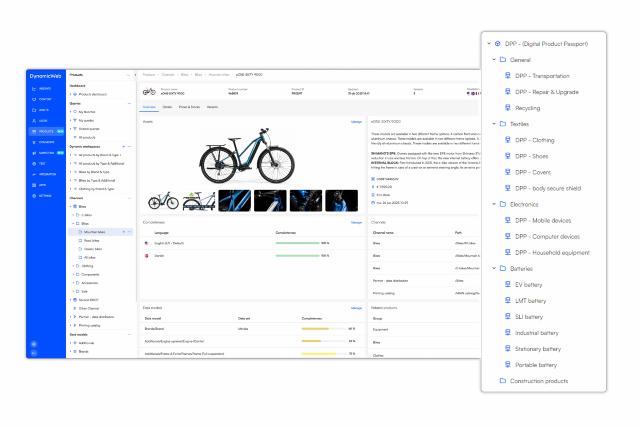PPWR
Packaging and Packaging Waste Regulation
The Packaging and Packaging Waste Regulation aims to tackle the persistent rise in packaging waste across the EU.
The PPWR will considerably change how we design, consume, and dispose of packaging in the EU across all value chains. It will bring nothing short of a revolution in the EU packaging landscape.
Most packaging categories are affected in one way or another by the measures contained in the PPWR, so all businesses should prepare for what is coming.

Key objectives of the PPWR
Reduce packaging waste
The PPWR intends to reduce the amount of packaging waste generated in the EU, introduce restrictions on what packaging can be used, and promote reusable and refillable packaging solutions.
Boosting high-quality recycling
The PPWR aims to make all packaging on the EU market recyclable in an economically viable way by 2030.
Adopting harmonised rules
EU-wide rules on labelling, void space, and mandatory recycled content will promote a level-playing field across the EU, with the same rules applying to all.

Compliance
What is the PPWR and what does it mean to your business?
The PPWR places significant emphasis on Extended Producer Responsibility (EPR), which mandates manufacturers to oversee not only the production and distribution of their goods but also the disposal of associated packaging.
Companies, particularly those branding or influencing packaging design, must enroll in a national register, remitting corresponding fees and adhering to regular reporting of packaging activities.
Part of the solution
DynamicWeb PIM and the PPWR
A Product Information Management (PIM) system can play a crucial role in helping companies comply with the new PPWR requirements and ensure the correct data is always available and up-to-date, safely stored and effectively distributed.
DynamicWeb offers a flexible and scalable Product Information Management (PIM) system that enables companies to easily collect data from different sources, including ERP systems, third-party data pools, partner feeds etc.

How a PIM system can help you
A PIM system can help you enhance transparency, compliance, and sustainability in your product packaging practices while meeting regulatory requirements and consumer expectations.
Utilize Dynamicweb PIM (Product Information Management) to register and manage data related to packaging. This includes details such as dimensions, weight, materials used, and any regulatory requirements specific to packaging waste management.
Capture and maintain information about the recyclability of your products' packaging materials. This involves specifying whether materials are recyclable, the type of recyclability (e.g., widely recycled, limited recycling options), and any guidelines or standards (like ASTM or ISO standards) your packaging adheres to.
Document detailed information about the materials used in your packaging. This includes the composition of each material (plastics, metals, paper, etc.), their sources (virgin, recycled), and any certifications (e.g., FSC for sustainable forestry products).
Ensure that the data collected complies with relevant regulations and standards, such as PPWR if applicable in your region. This includes understanding reporting requirements, deadlines, and ensuring your data is accurate and up-to-date.
Integrate your PIM system with other relevant systems or databases to streamline data sharing and accessibility. This ensures that stakeholders across your organization (and possibly external partners) have access to accurate packaging data when needed.
Use the data collected to generate reports and analytics. This can help identify trends, assess environmental impacts, track compliance metrics, and make informed decisions regarding packaging design and sustainability initiatives.
Establish processes for ongoing data maintenance and improvement. Regularly review and update packaging data to reflect changes in materials, regulations, or internal requirements.

Do you have your data in order?
Systems Data Ownership
The quality of your data and the way you register it will become increasingly important in the coming years, as the requirements for collecting, storing, and reporting data continue to rise.
Having a PIM system that can be seamlessly integrated to the ERP system empowers organizations to streamline data management across the entire product lifecycle. By centralizing and harmonizing product information, companies can ensure accuracy, consistency, and compliance with regulatory standards. This capability is pivotal for ESG reporting, where precise and comprehensive data on product origins, materials, manufacturing processes, and environmental impacts are crucial.
Reporting
Categories of materials
- Cartboard
- Paper
- Ferrous materials
- Aluminum
- Glass
- Plastic
- Food and beverage cartons
- Wood
Reporting
Sorting
It must be specified how the packaging waste is to be sorted:
- Recycling
- Residual waste
- Hazardous waste
It must also assess whether the packaging ends up as:
- Commercial waste
- Household waste
Packaging Material
Registration Groups
- Primary
- Secondary
- Tertiary

More insights
Want to learn more about PIM?
What is a PIM system, why do you need one and how can DynamicWeb PIM fit into your business?
Delve into the depths of our PIM-Guide to get the answers and discover best practices and industry insights.